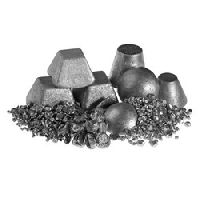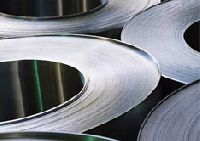
captive power plant
Aluminium is a power intensive industry. The electrolysis process used to produce Aluminium requires large quantities of electrical power, cost of which is almost one-third of the total cost involved in production of Aluminium. The Direct Current (DC) required depends on the total number of cells or pots installed and the potline current involved. For meeting this huge power requirement most Aluminium smelters are equipped with their own Captive Power Plants.
...more
bauxite mines
BALCO has two captive Bauxite mines in Chhattisgarh state - one at Mainpat with capacity 7,50,000 TPA & another at Bodai Daldali (Kawardha) with capacity of 12,50,000 TPA and a Coal mine at Chotia with capacity of 1 MTPA. Both the Bauxite mines are situated at an elevated plateau; the area is flat and Mining Method - Mechanised Opencast Miningcovered with soil lateritic boulders. The Bauxite ore is available as pocket deposit with 1.5 metre average thickness and is normally available below 3 - 5 metres from ground level. Mining Method - Mechanised Opencast Mining, Equipment Deployed - Drill, Excavator, Dumper, Dozer and Water Sprinkler, Afforestation - Plantation of manifold local species has increased the green density in the surrounding landscape,, Environment Conservation – Pre-defined and systematic design of Garland Drains, Check Dams, Parapet Walls, development of Green Belt etc.
...more
aluminum raw material
The Hall- Heroult process is an example of Aluminium smelting process and is used industrially.Aluminium cannot be produced by an aqueous electrolytic process because hydrogen is electrochemically much nobler than aluminium. Thus, liquid aluminium is produced by the electrolytic reduction of alumina (Al2 O3) dissolved in an electrolyte (bath) mainly containing Cryolite (Na3AlF6). Aluminium is formed at about 900°C, but once formed has a melting point of only 660°C. In some smelters this spare heat is used to melt recycled metal, which is then blended with the new metal. Recycled metal requires only 5 percent of the energy required to make new metal. Blending recycled metal with new metal allows considerable energy savings, as well as the efficient use of the extra heat available. When it comes to quality, there is no difference between primary metal and recycled metal. The smelting process required to produce aluminium from the alumina is continuous, the potline is usually kept in production for 24 hours a day year around. A smelter cannot be easily stopped and restarted. There are two basic technology- Prebaked Technology and Soderberg Technology. In prebaked technology the anodes used are termed as prebaked anodes which are made from a mixture of petroleum coke, aggregate and coal tar pitch binder moulded into blocks and baked in separate anode baking furnace at about 1120 °C. An aluminium rod with iron studs is then cast or rammed into grooves in the top of the anode block in order to support the anode and conduct the electric current to the anode when it has been positioned in the cell.
...more
Aluminium Wire Rod
UTS (MPa) 59 - 97, Temper H16O C, Conductivity (%)61.3, The smelter capacity (installed capacity 100 KTPA), based on Soderberg Process.high quality Ingots, Wire Rods, Billets, Busbars and Rolled products.
...more
aluminium sheet coil
Range -885 mm -1620 mm, Standard 890, 965, 1240, 1270, 1540, 1620 mm, Alloy 4xxx, 5xxx, 6xxx, 8xxx, Thickness 4.50 - 12 mm for alloys of AI, AI-Mn, AI-Si, Arbour Diameter 750 mm without spool, Coil Density 2000 - 4500 kgs.
Thickness : 4.50 - 12 mm
...moreBe first to Rate
Rate This